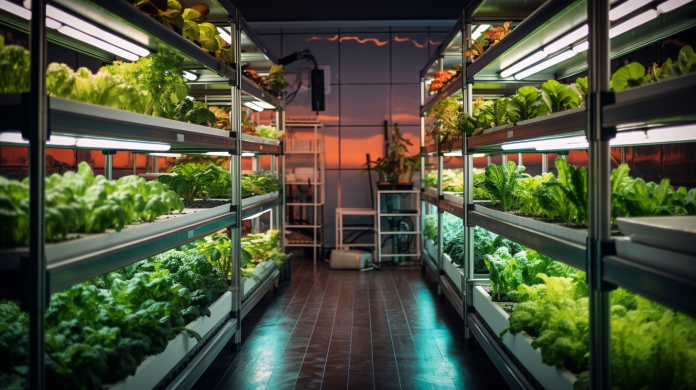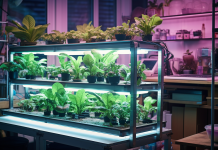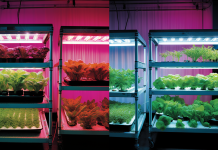In this article, we will explore Hydroponics on a Budget: Affordable DIY with cost-effective ways to embark on the journey of hydroponics, a method of growing plants without soil.
Designed with beginners in mind, we will present affordable DIY setup ideas that won't break the bank.
From simple container systems and low-cost nutrient solutions to DIY grow lights and budget-friendly growing mediums, we will also delve into repurposing materials for your hydroponic setup.
Simple Container Systems
One cost-effective option for beginners looking to start hydroponic gardening is to utilize a single container system. This is a straightforward and efficient method that can be easily set up at home.
With a single container system, all the plants are grown in the same nutrient solution, eliminating the need for multiple reservoirs or complex plumbing systems. A simple container, such as a bucket or a plastic tote, can be used to hold the nutrient solution. Various plants can be grown together in this container, as long as their nutrient requirements are similar.
This method not only saves space but also reduces the initial setup costs.
Low-Cost Nutrient Solutions
Additionally, to keep expenses at a minimum in hydroponic gardening, one can explore low-cost nutrient solutions. Nutrient solutions are essential for providing plants with the necessary minerals and nutrients they need to grow and thrive. While commercially available nutrient solutions can be quite expensive, there are alternative options that are more affordable and can be easily made at home. Here is a table showcasing three low-cost nutrient solutions that beginners can try:
| Nutrient Solution | Ingredients | Cost |
|---|---|---|
| DIY Nutrient Solution 1 | Epsom salt, baking soda, calcium nitrate | Low |
| DIY Nutrient Solution 2 | Fish emulsion, seaweed extract, molasses | Medium |
| DIY Nutrient Solution 3 | Compost tea, worm castings, vermicompost | Medium |
These low-cost nutrient solutions provide a budget-friendly alternative for beginners who want to try hydroponic gardening without breaking the bank.
DIY Nutrient Solution 1 – Mix Per Litre of Water
Epsom Salt (Magnesium Sulfate): 1 gram
Baking Soda (Sodium Bicarbonate): 0.5 grams
Calcium Nitrate: 2 grams
One can vary the ratios in this recipe, there are several considerations to keep in mind. Here’s the rationale behind changing the percentages of Epsom salt, baking soda, and calcium nitrate in the nutrient solutions:
1. Epsom Salt (Magnesium Sulfate):
Role: Primarily contributes magnesium and sulfur, essential for chlorophyll production and enzyme activities.
Variation Rationale: Adjusting the amount of Epsom salt helps in tailoring the magnesium and sulfur content, which may vary based on the specific needs of different plants or growth stages.
2. Baking Soda (Sodium Bicarbonate):
Role: Modifies pH and provides carbonates, which can indirectly benefit the plants.
Variation Rationale: The level of baking soda is adjusted primarily for pH management. Different plants thrive at slightly different pH levels, and varying the carbonate concentration helps in fine-tuning the pH.
3. Calcium Nitrate:
Role: Source of calcium and nitrogen. Calcium is essential for cell wall structure, and nitrogen is fundamental for amino acids and proteins.
Variation Rationale: Variations in calcium nitrate levels allow for the adjustment of calcium and nitrogen availability, supporting different growth phases and plant types.
Consideration Factors for Varying Ratios:
Plant Types: Different plants have distinct nutrient requirements. Tailoring the ratios allows for customization based on specific plant needs.
Growth Phases:
Plants require different nutrients predominantly at various stages of growth, like vegetative or flowering stages. Adjusting ratios helps in meeting these changing needs.
System Compatibility:
Depending on the type of hydroponic system used, certain nutrient concentrations may be more suitable to prevent issues like clogging or nutrient buildup.
Environmental Factors:
Factors like light, temperature, and humidity can influence nutrient uptake, and adjustments in ratios can help in optimizing plant growth under varying conditions.
DIY Grow Lights
To save costs and ensure optimal plant growth, it is important to consider DIY grow lights as a budget-friendly option for hydroponic gardening beginners.
Grow lights are an essential component of indoor gardening setups as they provide artificial light that mimics natural sunlight.
DIY grow lights can be easily constructed using affordable materials, such as LED strips or compact fluorescent lights (CFLs). LED strips are energy-efficient and can be customized to fit the specific needs of different plants.
On the other hand, CFLs are readily available and emit light across a wide spectrum, making them suitable for various types of plants.
When building DIY grow lights, it is crucial to consider factors like light intensity, spectrum, and duration to ensure optimal growth and photosynthesis for your hydroponic plants.
Budget-Friendly Growing Mediums
Affordable hydroponic gardening beginners can explore various budget-friendly growing mediums to support the growth of their plants.
When it comes to choosing a growing medium, there are several options that are not only cost-effective but also provide the necessary support and nutrients for plants to thrive.
One such option is coco coir, which is a byproduct of coconut husks and is lightweight, pH-neutral, and retains moisture well.
Another budget-friendly choice is perlite, a volcanic rock that is lightweight, provides good drainage, and helps with aeration.
Additionally, vermiculite, a mineral that undergoes a heating process to expand into a lightweight medium, is another affordable option that holds moisture well.
Repurposed Materials for Hydroponic Setups
One cost-effective way to set up a hydroponic system is by utilizing three repurposed materials commonly found around the house. By repurposing these materials, beginners can save money while still creating an efficient hydroponic setup.
Here is a table showcasing three repurposed materials and their usage in hydroponics:
| Repurposed Material | Usage in Hydroponics |
|---|---|
| Plastic bottles | Used as containers for growing |
| Egg cartons | Serve as seedling trays |
| PVC pipes | Create a framework for the system |
Plastic bottles can be cut and used as containers for growing plants, while egg cartons can be repurposed as seedling trays, providing a suitable environment for germination. PVC pipes can be used to create a framework for the system, allowing for the circulation of water and nutrient solutions.
Key Takeaways
- Utilize a simple container system for hydroponic gardening
- Explore low-cost alternatives for commercially available nutrient solutions
- Consider DIY grow lights as a budget-friendly option
- Repurpose materials for a cost-effective hydroponic system
Conclusion
In conclusion, hydroponics can be an affordable option for beginners with the use of simple container systems, low-cost nutrient solutions, DIY grow lights, budget-friendly growing mediums, and repurposed materials.
By implementing these suggestions, individuals can create their own hydroponic setups without breaking the bank.
With careful planning and resourcefulness, hydroponics can be a cost-effective way to grow plants and vegetables all year round.
Please see our supporting article:
Hydroponic Nutrient Solution Recipes
Troubleshooting Hydroponic Challenges
Exploring Different Hydroponic Growing Media



